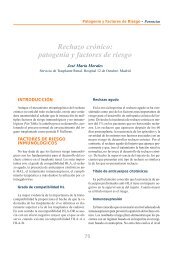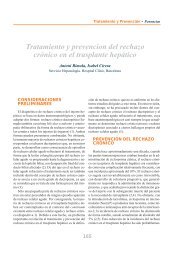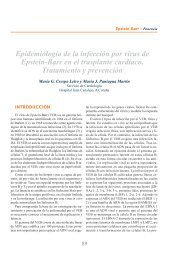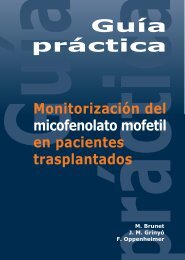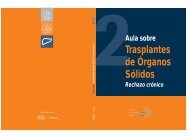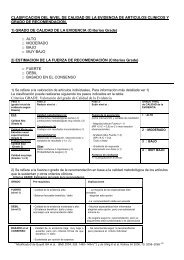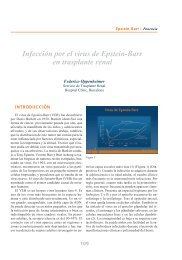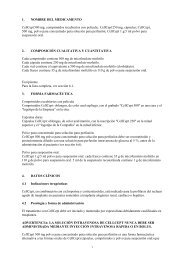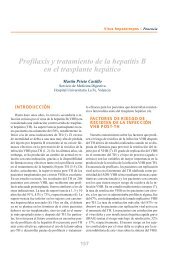Untitled - Roche Trasplantes
Untitled - Roche Trasplantes
Untitled - Roche Trasplantes
Create successful ePaper yourself
Turn your PDF publications into a flip-book with our unique Google optimized e-Paper software.
PROTOCOL BIOPSIES AND THE DIAGNOSIS OF HUMORAL REJECTION<br />
ated rejection (Figure 9): according to this model, the first evidence of a humoral response<br />
is the de novo generation of donor-specific antibodies (stage I). However, in many circumstances<br />
and for unknown reasons, donor-reactive antibodies do not elicit acute humoral<br />
rejection. The next stage (stage II) fit the criteria (see below) of accommodation<br />
(=grafts resistance to antibody = C4d detectable in allograft without pathology and dysfunction)<br />
and are therefore not necessarily predestined to lead to allograft injury. In stage<br />
III, in addition to positive staining for C4d, there are identifiable pathological features of<br />
humoral rejection, but allograft function is still normal (i.e., subclinical humoral rejection).<br />
Finally, in stage IV, in addition to positive staining for C4d and morphological signs of humoral<br />
rejection, clinically overt allograft dysfunction occurs. At this point in most cases<br />
already chronic allograft damage with often non specific changes like tubular atrophy or<br />
interstitial fibrosis, or even with for a humoral pathogenesis specific features like glomerulopathy<br />
or capillaropathy can be seen.<br />
Hypothesized stages of humoral rejection<br />
I II III IV<br />
Graft dysfunction<br />
(clinical chronic rejection)<br />
Graft injury (pathology in graft biopsy)<br />
Transplant<br />
C4d detectable in graft microvasculature<br />
De novo antibodies detectable in circulation<br />
Antibodies first<br />
produced<br />
Time (not to scale)<br />
Graft loss<br />
Figure 9. Proposed sequence of stages of antibody-mediated rejection as first suggested<br />
by R. B. Colvin, Department of Pathology, Massachusetts General Hospital, Boston, MA.<br />
However, detecting C4d at a very early time point after transplantation in clinically stable<br />
allografts by protocol biopsies (taken at day seven after transplantation) was of highly predictive<br />
marker for the onset of increasing titers of newly produced donor-specific antibodies.<br />
No C4d deposition was seen in preimplantation biopsies in these patients. Early<br />
detection of C4d and donor-specific antibodies was not associated with an inferior posttransplant<br />
allograft outcome at one-year follow-up, even without specific treatment in this<br />
study. This observation further supports the above mentioned hypothesis that early and<br />
mild humoral responses might be part of an accommodation process.<br />
63




